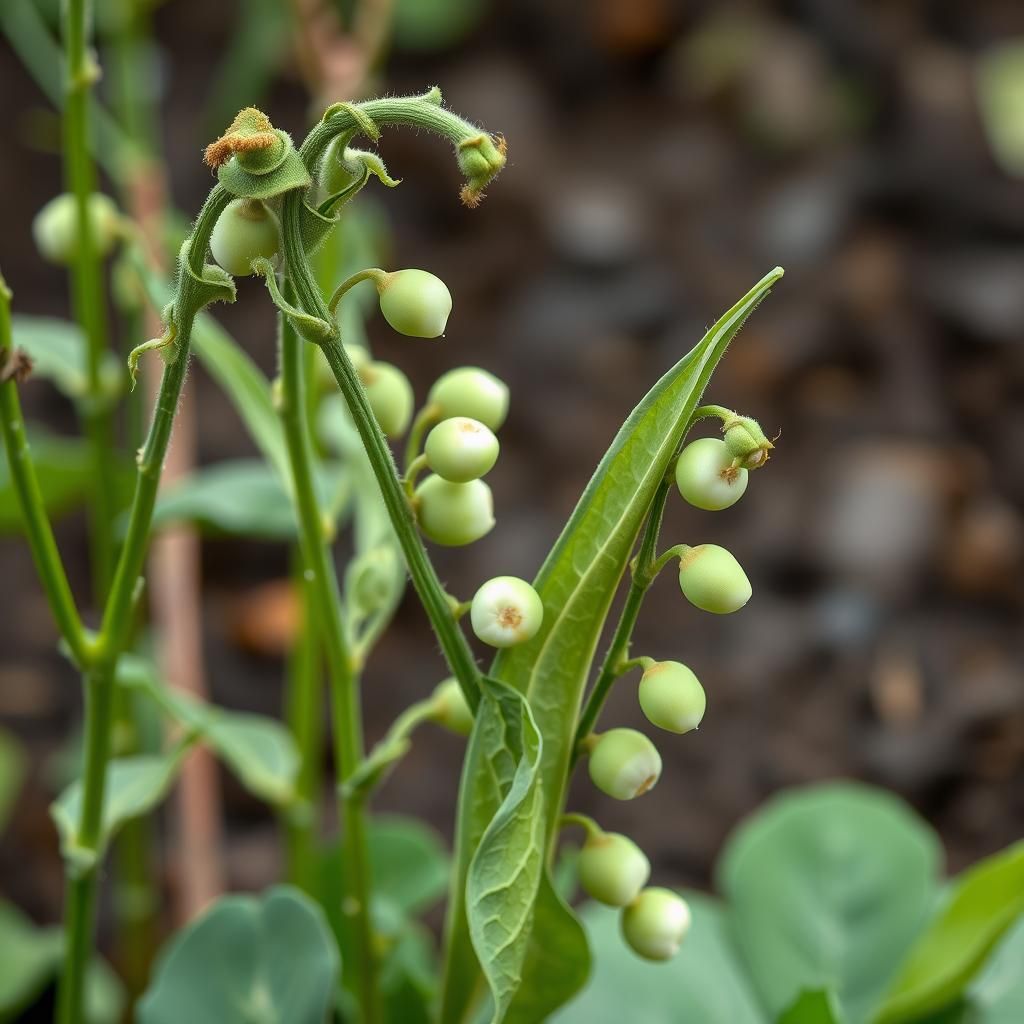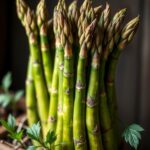When to Plant Snow Peas in NSW: A Comprehensive Guide for Optimal Growth

Snow peas are a delightful addition to any garden, offering sweet, tender pods that enhance a variety of dishes. In New South Wales (NSW), the timing of planting snow peas is crucial for achieving optimal growth and abundant yields. Understanding the local climate and soil conditions is essential for successful cultivation. This comprehensive guide will explore the best times to plant snow peas in NSW, providing tips on preparation, care, and harvesting to ensure a thriving crop. Whether you’re a novice gardener or an experienced green thumb, this guide will equip you with the knowledge needed for a fruitful snow pea harvest.
When to Plant Snow Peas in NSW
In New South Wales (NSW), the best time to plant snow peas is during the cooler months, specifically from late autumn to early spring. This timing allows the plants to thrive in the moderate temperatures that snow peas prefer, ideally between 10°C and 20°C. As these peas are sensitive to heat, planting them too late in the spring may lead to poor yields or even plant failure as the temperatures begin to rise. Gardeners should aim to sow seeds from March to June, ensuring that they are planted about 2-3 centimeters deep and spaced adequately to allow for proper growth.
Ideal Conditions for Snow Peas
Snow peas thrive in well-drained, fertile soil with a pH between 6.0 and 7.0. To improve soil fertility, it's beneficial to incorporate compost or well-rotted manure before planting. Snow peas also prefer full sun, meaning they should receive at least 6-8 hours of sunlight per day. During the planting season, consider the microclimate of your garden; locations that are sheltered from strong winds can enhance growth and yield.
Choosing the Right Time
Timing your planting is crucial in NSW, as snow peas are cool-season crops. In most regions, planting should commence in March to take advantage of the cooler conditions before summer heat sets in. After the last frosts, which generally occur until mid-spring, sowing can continue through May to ensure a good growing season. Utilizing a seedling calendar can help track optimal planting times according to your specific area within NSW.
Planting Techniques
When planting snow peas, sow the seeds 2-3 centimeters deep in rows that are 60 centimeters apart. This spacing allows for adequate air circulation and light penetration. It's recommended to plant seeds every 10-15 centimeters along the row for optimal growth. For those with limited space, consider using trellises so that the plants can climb, which not only saves space but also improving air circulation around the plants.
See also:
Watering Needs
Snow peas require consistent moisture for optimal growth. It is important to keep the soil evenly moist but not waterlogged. A general rule of thumb is to provide around 2.5 centimeters of water per week, especially during dry spells. Overhead watering should be avoided to minimize disease risk, and utilizing a drip irrigation system can be beneficial for targeted watering while conserving water.
Pest and Disease Management
During the growing season, snow peas can be susceptible to pests such as aphids, snails, and cutworms. Implementing companion planting strategies, such as planting marigolds or garlic, can deter these pests. Regular inspection of the plants is necessary, and any signs of pests or disease should be addressed promptly. Maintaining healthy soil and crop rotation can also help mitigate disease risks.
| Factor | Ideal Range |
|---|---|
| Temperature | 10°C - 20°C |
| Soil pH | 6.0 - 7.0 |
| Water Requirements | 2.5 cm per week |
| Sunlight | 6-8 hours per day |
| Plant Depth | 2-3 cm |
Understanding the Climate Requirements for Snow Peas in NSW
To achieve optimal growth of snow peas in New South Wales (NSW), it is essential to understand the unique climate conditions that affect their development. Snow peas thrive in cool temperatures, ideally between 10°C and 20°C. Planting should generally occur in early spring after the last frost date, allowing the seeds to germinate in moist soil. However, while spring is a favorable time, some gardeners may also opt for an autumn planting to take advantage of the cooler conditions before winter sets in. Monitoring local microclimates can also aid in determining the best time to plant, ensuring that pest pressures are minimized and that plants can mature before harsher weather conditions arrive.
Ideal Soil Conditions for Snow Peas
Snow peas prefer well-drained soil that is rich in organic matter. A loamy texture with good moisture retention is ideal, as it supports healthy root systems. It’s recommended to amend the soil with plenty of compost or aged manure to enhance its nutrient content, ensuring that your plants have access to the necessary nutrients during their growing cycle. Conducting a soil test prior to planting can provide insight into the soil pH, which should ideally be between 6.0 and 7.0 for optimal nutrient absorption.
Watering Requirements for Optimal Growth
Proper watering is crucial for snow peas, particularly during their establishment phase. They require consistent moisture, especially when flowering and producing pods. It’s best to water deeply and less frequently to encourage strong, deep root growth. Overwatering can lead to root rot, while underwatering may stunt growth and reduce yield. Mulching around the plants can also help retain soil moisture and prevent competing weeds.
See also:
Companion Planting with Snow Peas
Companion planting can greatly benefit snow peas by improving their growth and protecting them from pests. They pair well with carrots, radishes, and lettuce, which all enhance the soil’s nutrient levels while attracting beneficial insects. Avoid planting them alongside garlic and onions, as these can inhibit pea growth and yield. Strategically placing companion plants can create a more biodiverse garden, ultimately leading to a healthier crop.
Common Pests and Diseases to Watch For
Snow peas are susceptible to several pests and diseases, notably aphids and powdery mildew. Regular monitoring is essential to catch these issues early. Implementing integrated pest management can help control pest populations through natural predators and organic solutions. Ensuring adequate air circulation around the plants can also prevent the onset of diseases like powdery mildew, which thrives in humid conditions.
Harvesting Techniques for Snow Peas
Proper harvesting techniques are vital to maximizing yield and maintaining the quality of snow peas. Harvest when the pods are young, tender, and before they begin to yellow. Using sharp scissors or pruning shears can help avoid damaging the plant during the process. Frequent harvesting encourages the plants to continue producing throughout the growing season, providing a continuous supply of fresh, crunchy snow peas for the kitchen.
Questions from Our Readers
When is the best time to plant snow peas in NSW?
The best time to plant snow peas in New South Wales (NSW) is typically between late winter and early spring, specifically from late August to early September. This timing allows the plants to take advantage of the cooler temperatures, which are ideal for their growth.
What soil conditions are ideal for growing snow peas in NSW?
Snow peas prefer well-draining, loamy soil that is rich in organic matter. It's beneficial to ensure the soil pH is slightly acidic to neutral, around 6.0 to 7.0, to promote healthy growth and nutrient absorption.
See also:
How much sunlight do snow peas need?
Snow peas require full sun for optimal growth, which typically means about 6 to 8 hours of direct sunlight each day. Providing adequate sunlight will help in achieving better yields and healthier plants.
Can I plant snow peas in pots in NSW?

If you want to read more articles like When to Plant Snow Peas in NSW: A Comprehensive Guide for Optimal Growth, we recommend you check out our Seeds category.
Leave a Reply
Related Articles